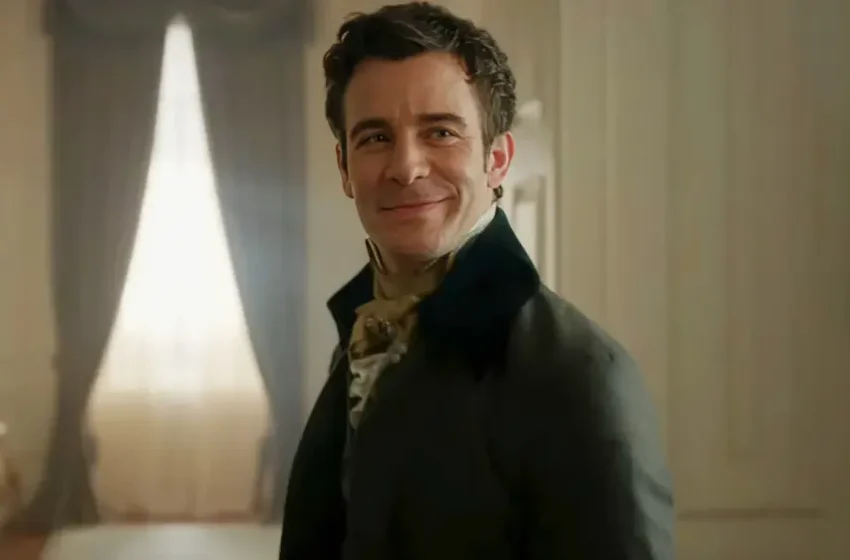
Benedict Bridgerton: The artistic soul of Bridgerton Netflix
In Bridgerton, the Netflix show, Benedict Bridgerton is a fan-favourite (with good reason; he is arguably the most interesting character in the entire Bridgerton household). Free-spirited, creative, and charming, Benedict’s story explores self-discovery, love, and family loyalty in the midst of Regency-era expectations.
In this article, we talk about who Benedict Bridgerton is, why he qualifies as a fan favourite, and why his story is an Australian favourite.
Who is Benedict Bridgerton?
Benedict Bridgerton is one of the most intriguing and complex characters in Netflix’s hit period drama, Bridgerton, based on Julia Quinn’s best-selling novels. He’s the second son, and he often gets into a bit of trouble as the artistic one – in comparison to his brothers who uphold duty, which might be part of the reason. Benedict has quietly won the hearts of many fans, particularly in Australia, while the series has focused mainly on the romantic lives of Daphne, Anthony, and Colin.
Benedict’s role in the Bridgerton family
Unlike his older brother Anthony, who is occupying the role of Viscount and has to act responsibly, Benedict has more freedom because he is the second son and is free to express himself creatively and curate his life without noticing pressure or rules from his siblings or their fates.
Some major components of Benedict’s role:
- The second son and social freedom: Without the burden of inheritance, Benedict can live more freely and creatively.
- Emotional anchor: He often acts as a confidant to his siblings, particularly Eloise and Colin, bringing warmth and perspective to family conflicts.
- Voice of balance: His calm and thoughtful nature offsets the intensity of his elder brother’s sense of duty.
Through Benedict, the show presents the tension between societal duty and personal freedom — a universal theme that resonates well beyond the Regency era.
Benedict’s arc in Julia Quinn’s novels
In the Bridgerton series, a series of novels by Julia Quinn, Benedict’s character develops primarily in Book 3: An Offer From a Gentleman. He is modelled with a Cinderella-like story arc typical in the genre, where he begins as a potential suitor who also embodies the characteristics of a second son cousin, charming but ungroomed, who becomes a loving husband and artist.
Here are a few notable features:
- He falls in love with Sophie Beckett, a housemaid from a prominent family.
- He wrestles with class and the privileges of his social standing.
- He ultimately follows his passion for becoming a painter.
- He engages in love and subverts the structures inhibiting love, which affect not only their romance and relationship but also their emotional growth for him and Sophie.
His story arc construes a chain of character change defined by self-change and growth, power accountability by ignoring status, and romantic moral victory.
Benedict Bridgerton’s creative pursuits
Benedict may be the second Bridgerton son, but he’s first in line when it comes to creativity. From the moment we meet him, he’s trading the marriage mart for sketchbooks, chasing the intoxicating promise of freedom that a blank canvas offers.
1. A childhood fascination with drawing:
As a boy, Benedict did little else on hot summer afternoons than make copies of landscape paintings in Aubrey Hall, planting the seeds of a lifelong interest in art.
2. A bohemian patron:
A chance meeting with the half-demented painter Henry Granville yanks Benedict from the entrenched parlours of Mayfair to candle-lit studios where form, colour, and desire become intertwined.
Exploration of creative identity
An illicit two-month slip into evening life-drawing classes allowed him to play with chiaroscuro and limited palettes, and experiment with Regency realism and ostensible proto-Romanticism.
4. The attic studio:
The attic studio: Beneath the Bridgerton roof sits a paint‑splattered sanctuary—his siblings knock, then whisper, lest they interrupt the muse at work.
5. Art as emotional language:
In An Offer from a Gentleman, his pages are filled with sketches of his masked “lady in silver,” later revealed to be Sophie Beckett—art serves as both confession and a map for Benedict’s journey of realisation.
6. Palette of hydrangeas:
Benedict’s green and blue palette reflects Violet Bridgerton’s beloved garden.
Why Benedict Bridgerton connects with Australian audiences
Aussies warm to Benedict Bridgerton because underneath the fabric of a Regency waistcoat, he has all the makings of an Aussie mate. He’s relaxed and cheeky, treating everyone equally—from fancy debutantes to everyday footmen—without worrying about society’s rules. His creative instinct and willingness to flick convention embody Australia’s spirit of ‘have-a-go’, while his low-key loyalty to his siblings captures. Because he’s curious about things like art, romance, and spur‑of‑the‑moment adventures. He doesn’t come off as some fancy aristocrat—he feels more like a laid‑back mate you’d invite to a beach barbie after a tough week.
Style and aesthetics: Benedict’s artistic flair
In addition to Benedict’s true artist persona, he also embodies an artist aesthetically. With soft linen shirts, relaxed tailoring, and strong prints, Benedict’s wardrobe has now become a character in and of itself.
Fashion highlight of Benedict’s fashion:
- Yet romantic colour palettes
- Textures such as wool, velvet, and soft cotton
- Effortless grooming with natural soft waves and curls
Conclusion
Benedict Bridgerton is a testament that an artist’s intuition should always be followed in the extravagant environment of the Regency. His quietly rebellious stand against strict class codes mirrors Australia’s own more leisurely “have-a-go” philosophy. By choosing love and art rather than social privilege, he teaches us that true fulfilment begins with believing in oneself. The fellow who turns down a night in the ballroom for a paint-splattered life deserves our support as an audience. It is the reason why his story lingers long after the last waltz.

